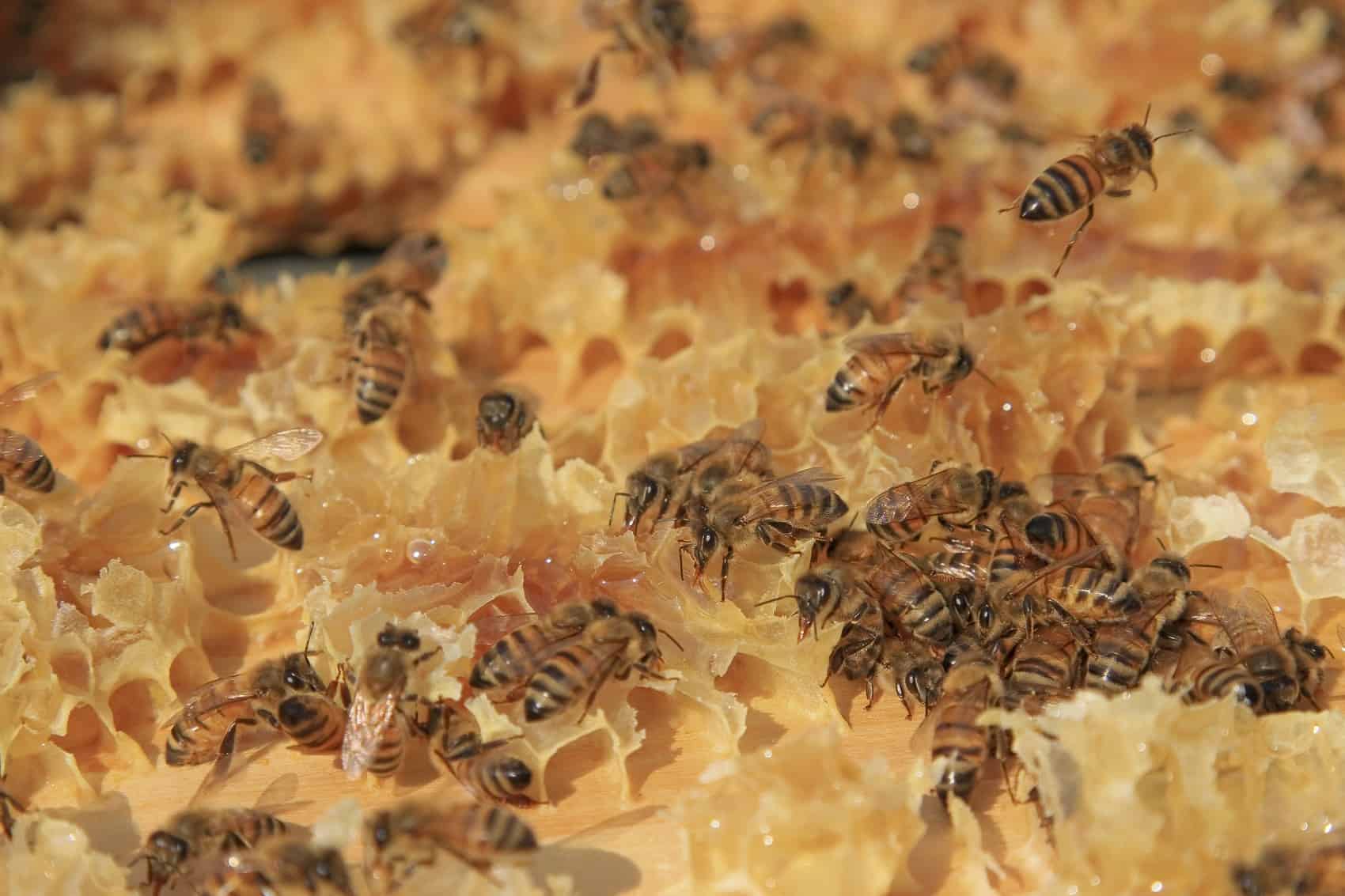PARIS — Scientists revealed Wednesday the trigger that can plunge a colony of obedient and sterile worker bees dutifully serving their queen into a chaotic swarm of sexual rebellion and regicide.
It’s in the beeswax, according to a study published in the British journal Royal Society Open Science.
Biologists have long puzzled at what, exactly, tips the ordered world of many social insects — rigidly divided by caste, function and hierarchy — into murderous mayhem of sometimes Shakespearean dimensions.
In this case, the actor subject to observation and experimentation was Bombus terrestris, more commonly known as the bumblebee.
In its steady-state “social phase,” a bumblebee colony is a paragon of efficiency that would make Amazon’s Jeff Bezos green with envy.
“Workers and the queen usually just attend to their tasks peacefully,” explained Anne-Marie Rottler-Hoermann, a researcher at the Institute of Evolutionary Ecology and Conservation Genomics in Ulm, Germany, and lead author of the study.
The workers — always female — focus selflessly on foraging, taking care of the brood, nest-keeping and maintaining defences against potential aggressors.
The queen does what queens do: allows herself to be pampered and fed by her offspring, while she lays eggs to produce more workers and the occasional male that may later mate with a virgin queen, known as a gyne.
The final act
Males are otherwise pretty useless. They play no role in the life of the colony, which they abandon shortly after emerging.
Born in the late summer, when most of the nectar-rich flowers are gone, these wandering Lotharios usually die within a few days.
This clear division of labor and absence of sexual conflict “can be considered the main reason for the great evolutionary and ecological success of social insects,” Rottler-Hoermann said.
With bumblebees, a typical colony — which has a life-cycle of less than a year — will grow to accomodate 150 workers and one queen.
But at a certain point something snaps, and the clockwork cooperation comes to an end.
The transition to the “competition phase” is quick — and sometimes brutal.
“It is a total behavioral change in the whole bumblebee colony from one day to the next,” Rottler-Hoermann told AFP.
Suddenly agitated, the bees run around attacking each other, sometimes ripping open egg cells to kill the eggs inside.
“Aggression is so pronounced that it can even lead to the death of the queen,” she added.
Experiments have shown that the presence of a queen enforces sterility among workers. But as the colony matures these rank-and-file bees, in an act of defiance, lay eggs anyhow.
Unfertilized, they yield only males with a single set of chromosomes.
The queen, who mated before founding her colony, has stored sperm from that union, allowing her to produce both female and male offspring.
Earlier research has pointed to the size of the colony as the trigger for the violent undoing of the social order.
But the new study, in a set of clever experiments, showed it was subtle changes in the chemical composition of wax in the nest that unleashed aggression.
When exposed to wax from a colony in the end-game phase, workers from a newly established nest “start to compete for reproduction,” the study showed by way of proof.
Even when a fertile and active queen came into the picture, the wax still trumped her influence, it found.






